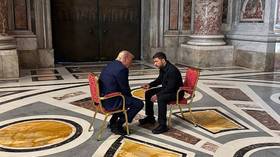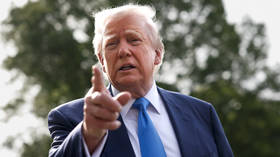No, Apple, we don’t need 72 different emojis to represent gay, straight & lesbian couples in 5 races

If I wanted an emoji to look exactly like me, I’d just send a photograph. But then, unlike Apple and Google, I understand that they are a symbolic shorthand, not a racist tool of oppression that ignores my identity.
On Wednesday, World Emoji Day, the two California companies revealed their expanded repertoire of “newest designs that bring even more diversity to the keyboard.”
Seventy-two new iOS emojis of couples holding hands, instead of a generic symbol. Thus, a blonde woman with a blond man, a blonde woman with a tan skinned man, a blonde woman with a light-skinned black man, a blonde woman with a dark-skinned black man, a dark-skinned black woman with a light-skinned black woman, a white man with a moustache with a white man without a moustache, and so on and on and on.
Ten new emojis of the US sign for ‘deaf’, ten for cane walkers, five ears of different shades fitted with a hearing aid.

Twenty emojis of people with two genders and five different skin colors riding two different types of wheelchairs – mechanical and automatic.

Racism, homophobia and ableism intersectionally slayed again by the billionaire tech giants!
Who cares that there are already over 3,000 registered emojis, despite the fact that only a dozen account for half the usage, while the rest clutter up your phone making the needed ones harder to find.
At least users are happy at the inclusiveness. Or are they? Ironically, after the release there are more questions than compliments, since a Pandora’s Box has been opened. If you are including a black woman in a wheelchair, why not ginger people? Why not bald people, or fat ones? These are far more common – are they too ugly to be pictured? Why is it the US deaf sign and not those used in other sign languages? Why two people in a couple when there are polyamorous families living in threes? And surely if we have those, each option must include the option for all genders – 2, 3, or Facebook’s 71 – so you do the math timetables for all the possible permutations.

Ken Broni, who calls himself “the world’s first emoji translator and researcher” has done them. He told Yahoo that to be truly “inclusive,” companies must introduce 80,000 emojis. The average active vocabulary of an American is 20,000 words.
Whatever your opinion of the emoji – I am generally a reluctant and situational user – one cannot deny that this was an elegantly simple idea: a few pictures that would make intonation easier to understand in electronic communication, and allow certain things to be typed faster through symbols.
Now, there are more of them than Egyptian hieroglyphics and Japanese kanji, and through abandoning their abstractive philosophy they’ve unintentionally grown more discriminatory.
Also on rt.com Leftist tyranny? Eggless salad emojis and other ‘PC gone mad’ debates that drove the internet wildDespite my earlier words, Silicon Valley engineers and designers know that within an ideographic system something doesn’t need to resemble something else exactly to be understood by the recipient. They know that the presence of only a white (or yellow) man in a mechanical wheelchair was never intended as an insult to a tan-skinned woman in an automatic one, that the color was always irrelevant.
But to feed the addiction from fawning media headlines, to virtue-signal, to satisfy every complaint, rather than refining a system that had a clear practical purpose, they are moving it towards the point where it logically will no longer work other than as a monument to political sensibilities.
Emojis might be a “who cares?” or a “it’s not about you” issue. But somewhat aptly, this case also serves as a symbolic representation of the liberal West’s endless desire to fetishize and pander to minorities and separate identities, instead of improving conditions for the majority, or indeed, for us all.
By Igor Ogorodnev
Igor Ogorodnev is a Russian-British journalist, who has worked at RT since 2007 as a correspondent, editor and writer.















